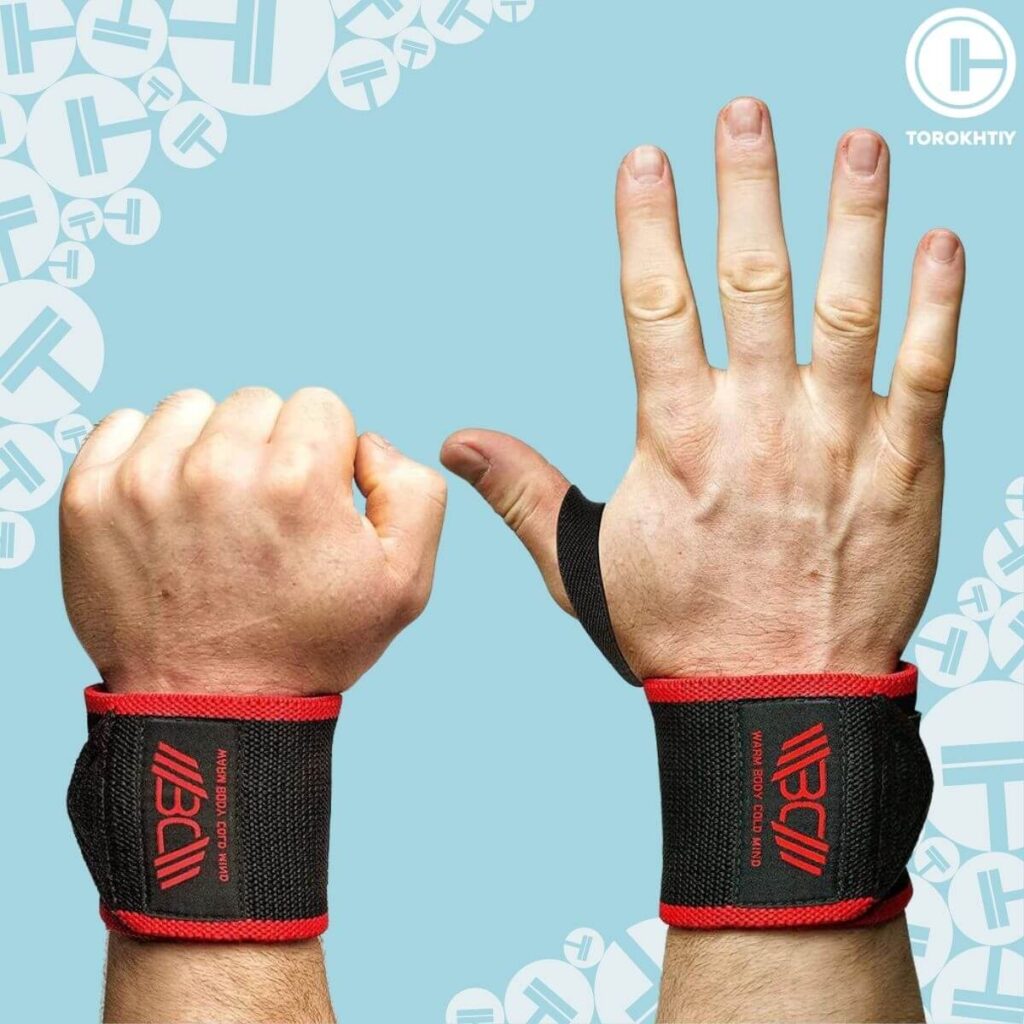Ring Dips for Functional Fitness: Everything You Need to Know
Author:
Unlock your full potential by engaging with our experts and community! Have questions about your fitness journey or looking for expert advice on weightlifting techniques? Don’t hesitate — leave a comment below and Ihor Shymechko will provide a personalized answer and insights to help you reach your goals.
Torokhtiy is reader-supported. Some links are affiliate links, and we may earn a commission at no extra cost to you. See our disclosure page for details.
As amazing as they are, ring dips can be a tricky exercise to master. The form and technique take a lot of patience and practice to nail down. So why should you bother with ring dips for functional fitness? And how can you master the movements? We’ll find out in today’s article.
Ring dips for functional fitness are an amazing exercise to build muscle strength in your upper body. They also prepare you for more complex workouts like muscle-ups. The best way to master ring dips is a step by step process called the ring dip progression.
In the long answer, we’ll cover every small detail you need to know about functional fitness ring dips. First, what are ring dips?

What Are Ring Dips?
Ring dips are an exercise designed to target the entire upper body at the same time. They’re very similar to regular bar dips, with one crucial difference. The gymnastic rings used for the ring dip are unstable.
This extra task of maintaining balance while dipping is what makes the ring dip more difficult than the regular dip.
The ring dip consists of 3 moves:
- Suspend yourself on a pair of gymnastic rings, supporting yourself with your elbows straight and chest out. This is called the top position.
- Slowly lower yourself until your thumbs are touching your armpits. This is called the bottom position.
- Push back up to top position, finishing in a lockout.
- Rinse and repeat.
The next question is: what muscles do ring dips work?
What Muscles Do Ring Dips Work?
Functional fitnessring dips provide extra strength and muscle development in most of your upper body. The main muscles it targets are your:
- Shoulders
- Chest
- Triceps
- Abdominals
6 Types of Ring Dips
There are several variations of the ring dip. Some increase difficulty while others make it easier. Let’s have a look at some major ones:
1. Strict Ring Dips
Strict ring dips are the final stage of the ring dip progression, which we’ll talk about soon, and essentially the purest form of the ring dip. It’s important to master the strict ring dip before going on to more complex variations.
2. Kipping Ring Dips
Kipping ring dips are a variation that most beginners find tricky to master. The kipping part of this movement helps to build momentum when pushing yourself up.
Let me tell you how it works. Lower yourself as you normally would. As you push upwards, use your knees to build momentum by driving them upwards too. Once at the top, lock your body in the proper form. You can then lower yourself again and repeat the movement.
3. Banded Ring Dips
Some people struggle with stability and getting the rings under control when dipping. Banded ring dips can help with that.
Tie an elastic band loosely across both rings. Lockout when you push up, but place your knee on the band as you lower yourself. This gives you extra support and stability while you dip.
4. Weighted Ring Dips
Believe it or not, some people have mastered the ring dip so well that they increase the difficulty by adding weights to their body as they dip.
From wearing weighted vests to hanging a dumbbell from your feet, adding extra weight to your dip helps make it more intense and effective. Check out the weighted ring dip in action.
5. Bulgarian Ring Dips
Bulgarian ring dips are an advanced variation of the ring dip that build extra strength in your shoulders especially. Like strict ring dips, there’s no extra equipment used. The main difference, however, is your body form as you drop.
In strict ring dips, you maintain the same body form as you dip. With Bulgarian ring dips, however, that’s not the case. You push up normally, but as you drop, extend your elbows out so that the back of your arms are almost parallel to the floor.
6. Elevetor Ring Dips
This is another advanced variation of the ring dip. When doing elevator ring dips, instead of moving up and down the normal way, you’d stop at intervals for a few seconds, just like an elevator.
4 Benefits of Ring Dips
You might be wondering why anyone would even bother with ring dips, but there are several benefits to doing dips on rings. Let’s run through some of them.
✅ Increased gymnastic and functional fitness skill
Using rings in your exercises are almost foundational in developing the kind of strength, control, and skill needed to go far in both sports. Ring dips are one exercise you must master if you are to advance to more complex functional fitness movements.
✅ Increased muscle coordination and development
Balance and precise muscle coordination are at the heart of ring dips. They help you build up muscle strength in your upper body, but push you further to master balance under stress. This compound effect is extremely effective in increasing your muscle development and coordination.
✅ Ease for your joints
Ring dips go easier on your joints than other exercises that involve stable equipment. Instead of locking your wrist joints into one position, the rings offer you more flexibility with their ability to rotate 360°. This makes the movement much easier for your joints.
✅ Better skill in other exercises
Ring dips build muscle strength in your shoulder and develop your balance and control. This makes other exercises like bench press or push-ups much easier to do. The extra shoulder strength and newfound balance will make your movements more accurate and effective.
Follow us!

Free!
Get a 2-week Weightlifting Program as a bonus for the subscription to kickstart your training plan!

Free!
The Ring Dip Progression
Ring dips can be difficult to master. In fact, the movements are so tricky that most coaches will break them down into several smaller steps for you to master before you’re ready to dive in fully. This set of steps is called the ring dip progression.
Let’s look at each step individually.
1. Push-ups
Push-ups are the foundation for the ring dip progression. As easy as push-ups sound, they help you learn the form the ring dip requires. Master push-ups as well as you can before you move on to the next step.
2. Static hold
While the first movement focuses on form and technique, the static hold teaches you balance and control. The static hold says to suspend yourself on the rings while maintaining perfect form. Stay suspended for 20-30 seconds at a time. Do this for the top position and bottom position.
This movement introduces you to the balance required by ring dips without the stress of the actual dip.
3. Ring push-ups
First, push-ups introduce you to the form and basic technique. Then the static hold teaches you how to maintain balance. With ring push-ups, you combine both of these. Mastering them will be massive in your progress towards doing ring dips.
4. Stationary dip
Also called the bar dip, this is the next movement to master in the progression. It involves the dip exactly as you would do it on the rings, but without the instability. Whatever you use, make sure you maintain the same form and technique of the ring dip.
This movement will help you master the rig dip form and technique without the extra stress of finding balance.
Again, you can break this down even further to strict bar dip and kipping bar dip.
5. Banded ring dip
You’re finally ready to combine the stress of the dip with the need for balance. Starting with a banded ring dip is advisable, however, so that you are eased into the movement.
Use the band to provide some support and stability while you learn how to combine the compound requirements of the ring dip.
6. Ring dip
Once you’ve mastered the band ring dip, you’re ready to move to full ring dips. The strict ring dip should be your first full movement. As frustrating as this step by step progression might be, it’s important to ensure you don’t rush into anything you can’t handle.
From the strict ring dip, you can move onto more complex variations like the kipping or weighted ring dip.
2 Useful Tips for Doing Ring Dips
Doing dips on rings can be tricky, but it’s very doable. Once you wrap your head around the form and technique, it can be extremely rewarding. Here are some tips to make life easier for you:
1. Keep Your Fingers in Contact with Your Body
For most people, the biggest struggle is maintaining balance while dipping. One way to help with that is to keep your fingers in contact with your body, hips for top position and armpit for bottom position. This gives some extra support and tightness to your body, as opposed to holding your hands out and flailing.

2. Use Wrist Wraps
Wrist wraps basically provide support for your wrists while you dip. If you’re struggling with grip or pain in your wrists, it’s best to provide the extra padding of wrist wraps. This lets you focus on perfecting your form and technique without worrying about your grip or joints.
Velcro Weightlifting Wrist Wraps
If you like the wrist wraps idea, take a look at the Velcro Weightlifting Wrist Wraps from Warm Body Cold Mind. They provide all the support and stability you need for bench press. The elastic material also allows your wrist wraps to grip your wrist tightly but, at the same time, gently.
FAQ
What can I do instead of ring dips?
If you don’t have access to rings, you can do bar dips instead. You might miss the balance training provided by the rings, but you’ll get all the muscle development and strength.
Are ring dips better than push-ups?
It depends. Ring dips and push-ups are both effective exercises. Which one is better will depend on what you want. For example, dips target the triceps more while push-ups do more to the chest.
Push-ups are also much easier to learn and do not require any equipment.
Are ring dips harder than bar dips?
Yes. The main reason for this is the extra task of maintaining balance that doing dips on rings demand.
Conclusion
Functional fitness ring dips are amazing. They can be tricky and tasking to master, but are also extremely rewarding. They’re amazing no matter who you are, but functional fitness athlets or gymnasts, ring dips are essential.
Now it’s your turn. What do you think about ring dips? Did I mention anything that helps you out? Did I miss anything? Talk to me in the comments!
Also read:
- Best Wrist Wraps for Functional Fitness
- Rogue Wrist Wraps
- How To Get Better At Handstands
- How To Use Wrist Wraps
- What Do Wrist Wraps Do
- Best Wrist Wraps For Powerlifting
- Weighted Vest Guide
References:
- 100 Lbs Ring Dip // Youtube: https://youtube.com/shorts/4rFt6Bho5bM?feature=share
- Bar Dip: Muscles Worked & Technique // StrengthLog: https://www.strengthlog.com/bar-dip/
- Photo by jacoblund, Canva; photo by Torokhtiy Media Team.
Why Trust Us?
With over 20 years in Olympic weightlifting, strength training, nutrition coaching, and general fitness our team does its best to provide the audience with ultimate support and meet the needs and requirements of advanced athletes and professional lifters, as well as people who strive to open new opportunities and develop their physical capabilities with us.
By trusting the recommendations of our certified experts in coaching, nutrition, and sports training programming, as well as scientific consultants, and physiotherapists, we provide you with thorough, well-considered, and scientifically proven content. All the information given in the articles concerning workout programming, separate exercises, and athletic performance, in general, is based on verified data.
The product testing process is described in more detail here.
Author: Ihor Shymechko
Pro Olympic Weightlifter, Coach
Best Results: Snatch – 208 kg,
C&J – 240 kg
Ihor has been a professional weightlifter since 1996, boasting over two decades of competition experience. His notable achievements include clinching the European Championship in 2009 and securing a silver medal in the 105kg division at the Senior World Championships in 2011. Ihor represented his country in the 2008, 2012, and 2016 Summer Olympics. After retiring from competitive weightlifting, he transitioned to coaching, leveraging his vast experience to guide athletes who now compete on both national and international stages.




Still have questions after reading our article? Unlock your full potential by engaging with our experts and community! Don’t hesitate — leave a comment below and Ihor Shymechko will provide a personalized answer and insights to help you reach your goals.